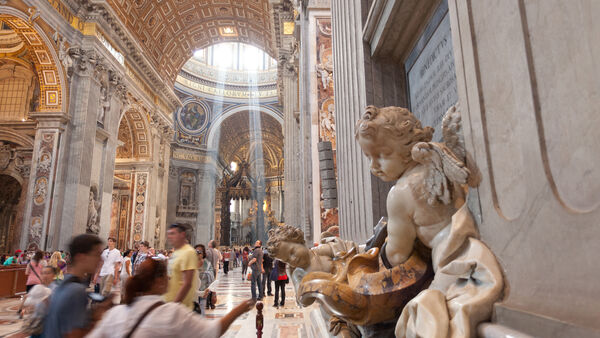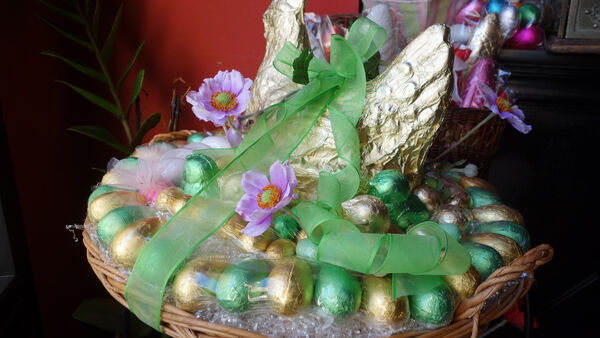Easter in Rome


By Greg DiPippo
The two weeks surrounding Easter are one of the busiest times of the year in Rome. Tens of thousands of pilgrims arrive to see the city come alive with what amounts to the most important event in the Catholic calendar. For pilgrim and secular tourist alike, the Triduum (Latin for "three day period") that extends from Holy Thursday evening to Easter Sunday is an opportune time to see the Church in action and, in particular, the pope, who follows an astoundingly heavy schedule. What follows is a mini-guide to the 72-hour whirl of activity in Rome around Easter:
Holy Thursday
The main events kick off with the blessing of the holy oils in Saint Peter's Basilica in the morning during a special Mass presided over by the pope; since most Catholics attend Mass in the evening, this is one of the best occasions to see the pope without an immense crowd.
The Triduum officially begins in the evening with the Mass of the Lord's Supper, commemorating the institution of Mass and the priesthood. The pope usually celebrates this in Saint Peter's. During the liturgy the Pope washes the feet of twelve priests in imitation of Christ during the last supper.
Good Friday
In accordance with ancient custom no Mass may be celebrated on this day, a sign of mourning over Christ's death. Still, a service is held in Saint Peter's in the afternoon, during which Saint John's account of Christ's suffering and death is sung, and the cross is kissed by all present before they receive communion. Extra hosts — the Eucharistic bread — are consecrated the previous day for this purpose.
In the evening the pope leads the stations of the cross, a procession that commemorates the fourteen stages of Christ's passion, at the Colosseum. At each of the stations, which are laid out around the exterior of the Colosseum, a meditation is read. The custom of doing the stations of the cross at the Colosseum emerged in the 18th century in honor of the martyrs who were killed there in ancient times. Interestingly, modern scholars often say that no Christians were ever martyred in the Colosseum; although there are no specific accounts of Christian martyrdoms taking place in this location, Roman law officially established the penalty of being thrown to the wild beasts in an arena for the crime of practicing Christianity. The Colosseum is the largest arena which the Romans ever built for such spectacles, and the persecution of Christians in Rome itself was often extremely fierce, so it is reasonable to assume that Christians were martyred there.
Saturday
Mass is celebrated in the late evening on the day before Easter Sunday. The pope usually celebrates this in Saint Peter's as well. During this service adult converts to Catholicism are officially received into the Church.
Easter Sunday
Mass is celebrated in the morning in Saint Peter's Square, and hence it can have a stadium feeling. During the Jubilee of 2000, Pope John Paul II reestablished an ancient custom that had lapsed in the 14th century, according to which the pope begins this Mass by venerating an ancient icon of the Risen Christ. Afterward the pope delivers the blessing known as the "Urbi et Orbi" ("to the City and to the World") from the balcony on the facade of Saint Peter's.
This, of course, is an idealized itinerary; whether the pope actually administers all these activities or can even attend, depends on earthly parameters, such as weather and his health.
Tickets for seats at these services are free, but need to be reserved in advance. Those who plan to be in Rome for Easter are advised to contact the Chancery offices of their local diocese as far in advance as possible to arrange for tickets to be reserved for them. It's possible to attend the services without a ticket, but you should plan on standing.
Greg diPippo is a classical scholar and docent for Context Rome.

